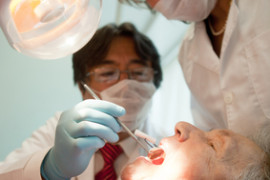New research published in Oral Microbiology suggests that common periodontal pathogen Porphyromonas gingivalis plays an important role in the development of oral squamous cell carcinoma.
Researchers in this study found that P. gingivalis infection caused an increase in proenzyme production and activation of matrix metalloproteinase 9, or MMP-9. MMP-9 is an enzyme that is involved in the breakdown of the extracellular matrix during critical times of development, repair, and disease.
Earlier this year, researchers found that remnants of P. gingivalis circulating through the blood stream increase MMP-9, which is also known to increase the inflammatory response to cardiac events.
According to this most recent study, proenzyme MMP-9 is “converted to active forms during cancer cell invasion.” Researchers concluded that these findings explain the mechanisms behind P. gingivalis’ involvement in the development of oral squamous cell carcinoma.
Interestingly, the researchers noted, another periodontal pathogen, Fusobacterium nucleatum—known to be involved in the progression of colorectal cancer—did not illicit the same effect as P. gingivalis.
Despite this, both P. gingivalis and F. nucleatum are known to have “well-characterized immune disruptive properties,” and more investigations will undoubtedly follow as we work to uncover the many ways in which they affect oral-systemic disease.
According to the Oral Cancer Foundation, about 90% of oral cancers are squamous cell carcinomas. Oral cancer kills approximately 8,000 people every year in the United States alone. That it has a significant connection with periodontal disease—a condition that affects 80% of the adult U.S. population—makes it all the more important to understand and address microbial burden as a component of oral cancer prevention.



